Tatting lace with no regrets
If you're Euro-American, your great-grandmother probably tatted, and if her great-grandmother was a lady of class, she probably also tatted. While there is some thought that tatting has nautical origins, it is a relatively new lace-making technique that materialized a little over two hundred years ago and briefly trended in women's magazines and ladies' parlors. It is resurging, threatening to become as popular as it was in the late 1800s and early 1900s. Tatting is great on public transit. I can keep my lace and shuttle in my skirt pocket, pull it out and work on it for only a stitch or two if I like, then quickly shove it back into my pocket. Tatting was always an aristocratic pastime. Regular women had no time for sitting around to make lace. It was the 19th-century equivalent of the "fidget spinner" for women who hosted parties with fancy tea-things and was especially suited for chatty women who liked to keep their fingers preoccupied. Keturah Hickman Aristocratic fidget spinner One of my most prized possessions is a bookmark that was supposedly tatted by my great-great-great-grandmother, Mary Ann Wheeler. It was given to me by my maternal grandmother, who taught me to tat about four years ago when I asked to learn. It took me nearly three days to be able to make only an inch of lace. After that I made about ten yards of cotton lace edging for a quilt I sewed by hand. Shuttle tatting does indeed feel similar to a fidget spinner for me, except I feel good after "spinning" when I have something — lace — to show for it. Keturah Hickman Keturah Hickman Shuttle diplomacy I've been living on the road with my husband out of our backpacks for the last few months. Tatting stores better than knitting or crocheting might — it is light and needs little space. I'm even able to keep a few extra shuttles on me to give away whenever I meet someone who wants to learn. It is great on public transit. I can keep my lace and shuttle in my skirt pocket, pull it out and work on it for only a stitch or two if I like, then quickly shove it back into my pocket. Tatting is difficult to master if you have not already learned other handicrafts. It involves making a series of knots with either a shuttle or straight needles and requires perfect, taut tension in order to flip the knots from one thread to another so that the knots slide instead of stick. The size of the lace is determined by the needles when needle tatting and by the weight of the thread when shuttle tatting. Needle tatting is a good option if you have hand or finger disabilities. I personally prefer shuttle tatting simply because the shuttles are very pretty and fun to use. Shuttles can come in all sorts of sizes for holding more or less thread. They are traditionally made of sterling silver but can also be found made of bone, shell, wood, steel, or plastic. Often one tats with a thin thread, but it is possible to tat with any sort of string. I have used embroidery floss and yarn. Time to tat One can make all sorts of things by tatting. I made all my wedding dress lace with silk yarn. I've also made barefoot shoes, earrings (my own ears are unpierced, but earrings sell well on the road), bookmarks, collars, lace edgings, and doilies. There are various Instagram accounts selling tatted jewelry. Keturah Hickman Lace cuffs and collar combos are also popular. While little old ladies are best known for their doilies, they also used to make beautiful lace edgings for priests' vestments. I have ambitions of making a lace parasol. The beautiful thing about tatting is that once you master it, it doesn't take as long to make lace as one might think. When I hosted the girls' immersive program "The Living Room Academy," I did not teach tatting because it simply takes more time to master the basics than any other general skill, and I did not consider it a "necessary" skill to prioritize along with sewing and baking. However, if you feel that you simply want to make lace for the fun of it, it is worth the time and effort to learn tatting. My husband has joked that we should open a tatting shop next to a tattoo parlor, and I could offer "tats with no regrets." There's just something about a piece of lace. Perhaps it was an aristocratic fad at one point in history. But now ... now we all have time to make a little lace, if we want. Keturah Hickman
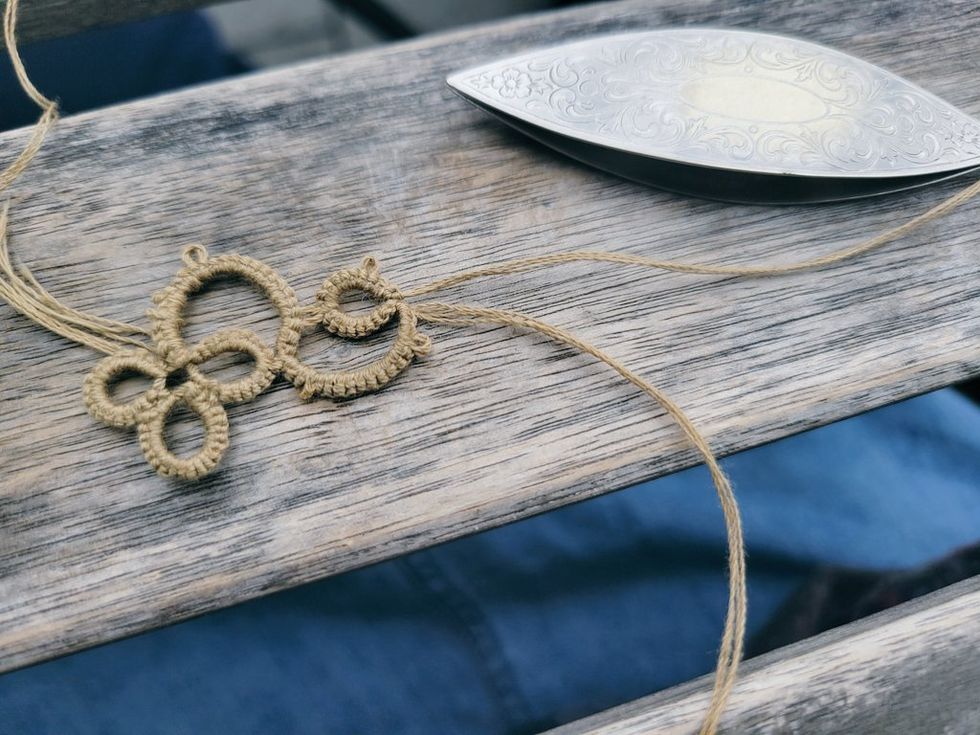

If you're Euro-American, your great-grandmother probably tatted, and if her great-grandmother was a lady of class, she probably also tatted.
While there is some thought that tatting has nautical origins, it is a relatively new lace-making technique that materialized a little over two hundred years ago and briefly trended in women's magazines and ladies' parlors. It is resurging, threatening to become as popular as it was in the late 1800s and early 1900s.
Tatting is great on public transit. I can keep my lace and shuttle in my skirt pocket, pull it out and work on it for only a stitch or two if I like, then quickly shove it back into my pocket.
Tatting was always an aristocratic pastime. Regular women had no time for sitting around to make lace. It was the 19th-century equivalent of the "fidget spinner" for women who hosted parties with fancy tea-things and was especially suited for chatty women who liked to keep their fingers preoccupied.
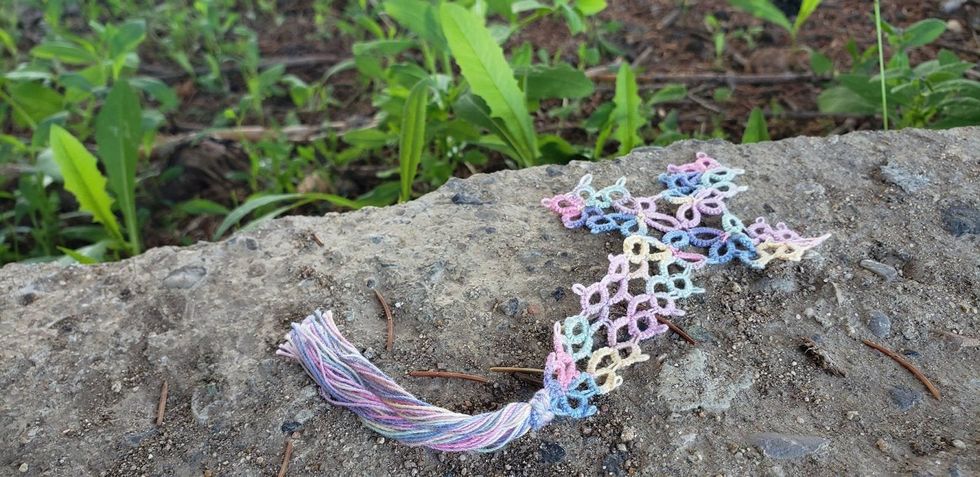 Keturah Hickman
Keturah Hickman
Aristocratic fidget spinner
One of my most prized possessions is a bookmark that was supposedly tatted by my great-great-great-grandmother, Mary Ann Wheeler. It was given to me by my maternal grandmother, who taught me to tat about four years ago when I asked to learn. It took me nearly three days to be able to make only an inch of lace. After that I made about ten yards of cotton lace edging for a quilt I sewed by hand.
Shuttle tatting does indeed feel similar to a fidget spinner for me, except I feel good after "spinning" when I have something — lace — to show for it.
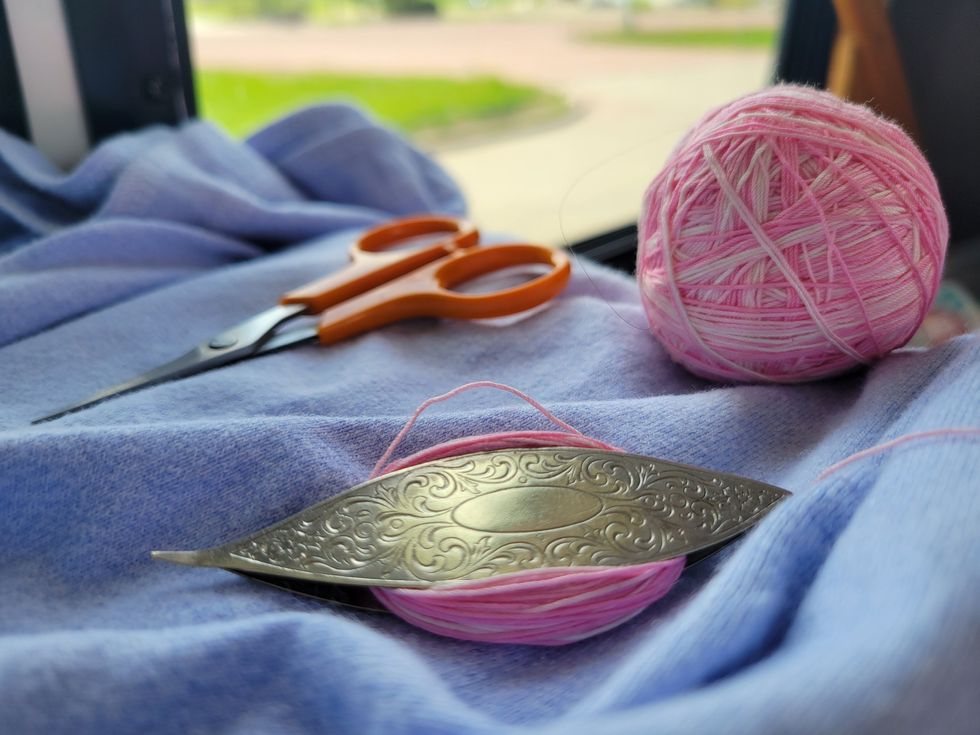 Keturah Hickman
Keturah Hickman
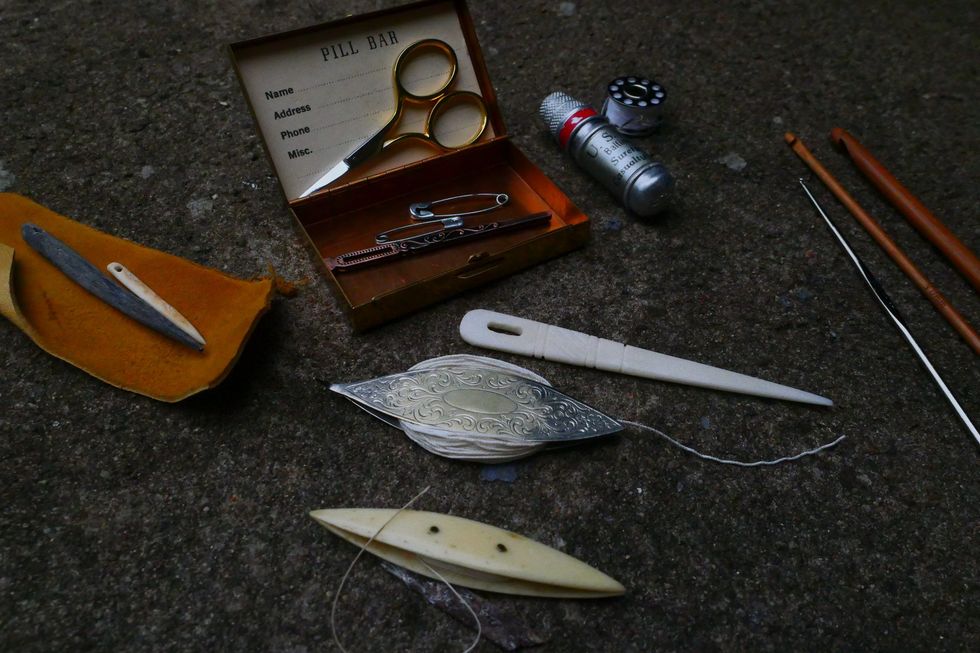 Keturah Hickman
Keturah Hickman
Shuttle diplomacy
I've been living on the road with my husband out of our backpacks for the last few months. Tatting stores better than knitting or crocheting might — it is light and needs little space. I'm even able to keep a few extra shuttles on me to give away whenever I meet someone who wants to learn.
It is great on public transit. I can keep my lace and shuttle in my skirt pocket, pull it out and work on it for only a stitch or two if I like, then quickly shove it back into my pocket.
Tatting is difficult to master if you have not already learned other handicrafts. It involves making a series of knots with either a shuttle or straight needles and requires perfect, taut tension in order to flip the knots from one thread to another so that the knots slide instead of stick. The size of the lace is determined by the needles when needle tatting and by the weight of the thread when shuttle tatting.
Needle tatting is a good option if you have hand or finger disabilities. I personally prefer shuttle tatting simply because the shuttles are very pretty and fun to use. Shuttles can come in all sorts of sizes for holding more or less thread. They are traditionally made of sterling silver but can also be found made of bone, shell, wood, steel, or plastic. Often one tats with a thin thread, but it is possible to tat with any sort of string. I have used embroidery floss and yarn.
Time to tat
One can make all sorts of things by tatting. I made all my wedding dress lace with silk yarn. I've also made barefoot shoes, earrings (my own ears are unpierced, but earrings sell well on the road), bookmarks, collars, lace edgings, and doilies. There are various Instagram accounts selling tatted jewelry.
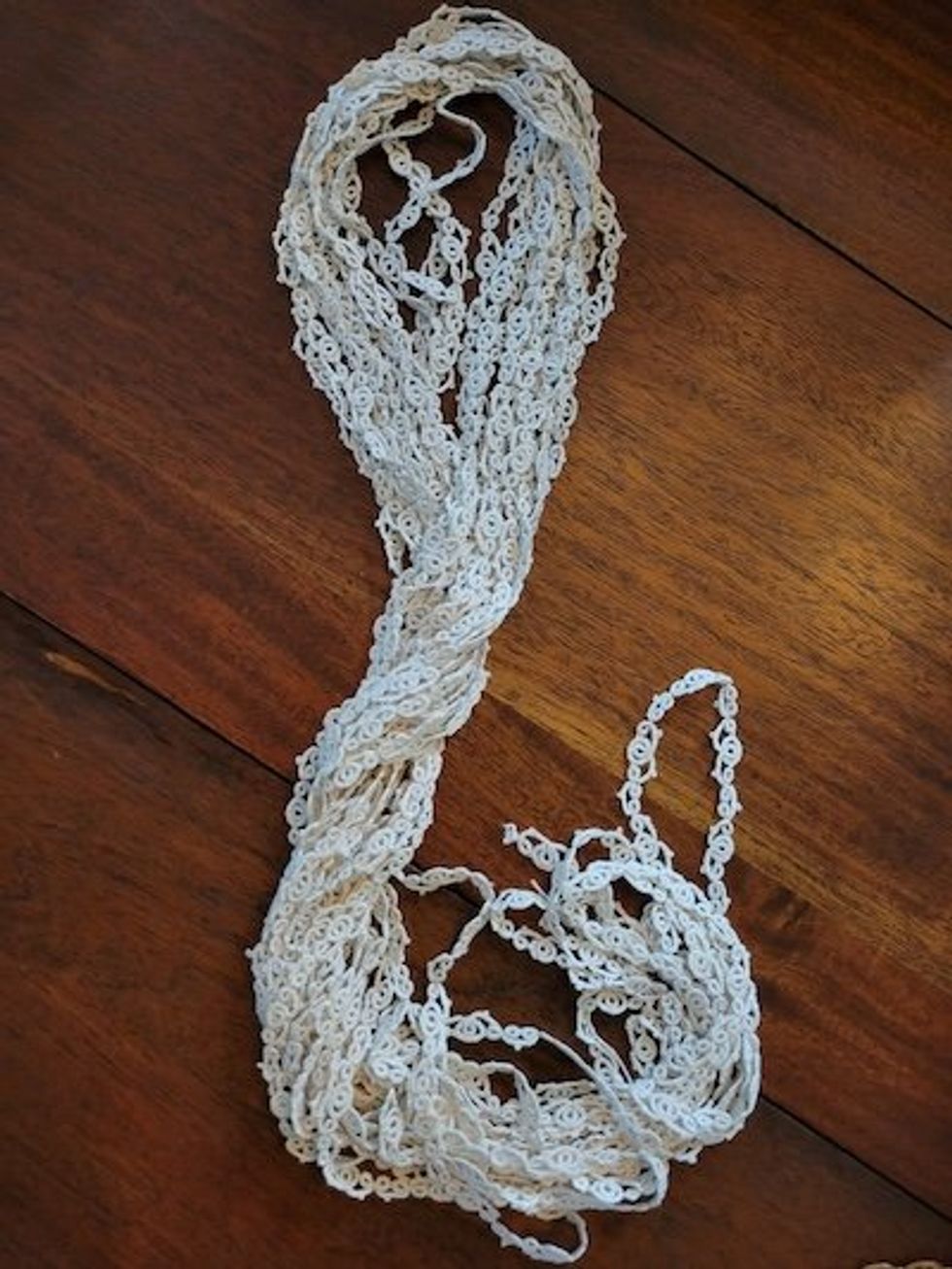 Keturah Hickman
Keturah Hickman
Lace cuffs and collar combos are also popular. While little old ladies are best known for their doilies, they also used to make beautiful lace edgings for priests' vestments. I have ambitions of making a lace parasol. The beautiful thing about tatting is that once you master it, it doesn't take as long to make lace as one might think.
When I hosted the girls' immersive program "The Living Room Academy," I did not teach tatting because it simply takes more time to master the basics than any other general skill, and I did not consider it a "necessary" skill to prioritize along with sewing and baking. However, if you feel that you simply want to make lace for the fun of it, it is worth the time and effort to learn tatting.
My husband has joked that we should open a tatting shop next to a tattoo parlor, and I could offer "tats with no regrets." There's just something about a piece of lace. Perhaps it was an aristocratic fad at one point in history. But now ... now we all have time to make a little lace, if we want.
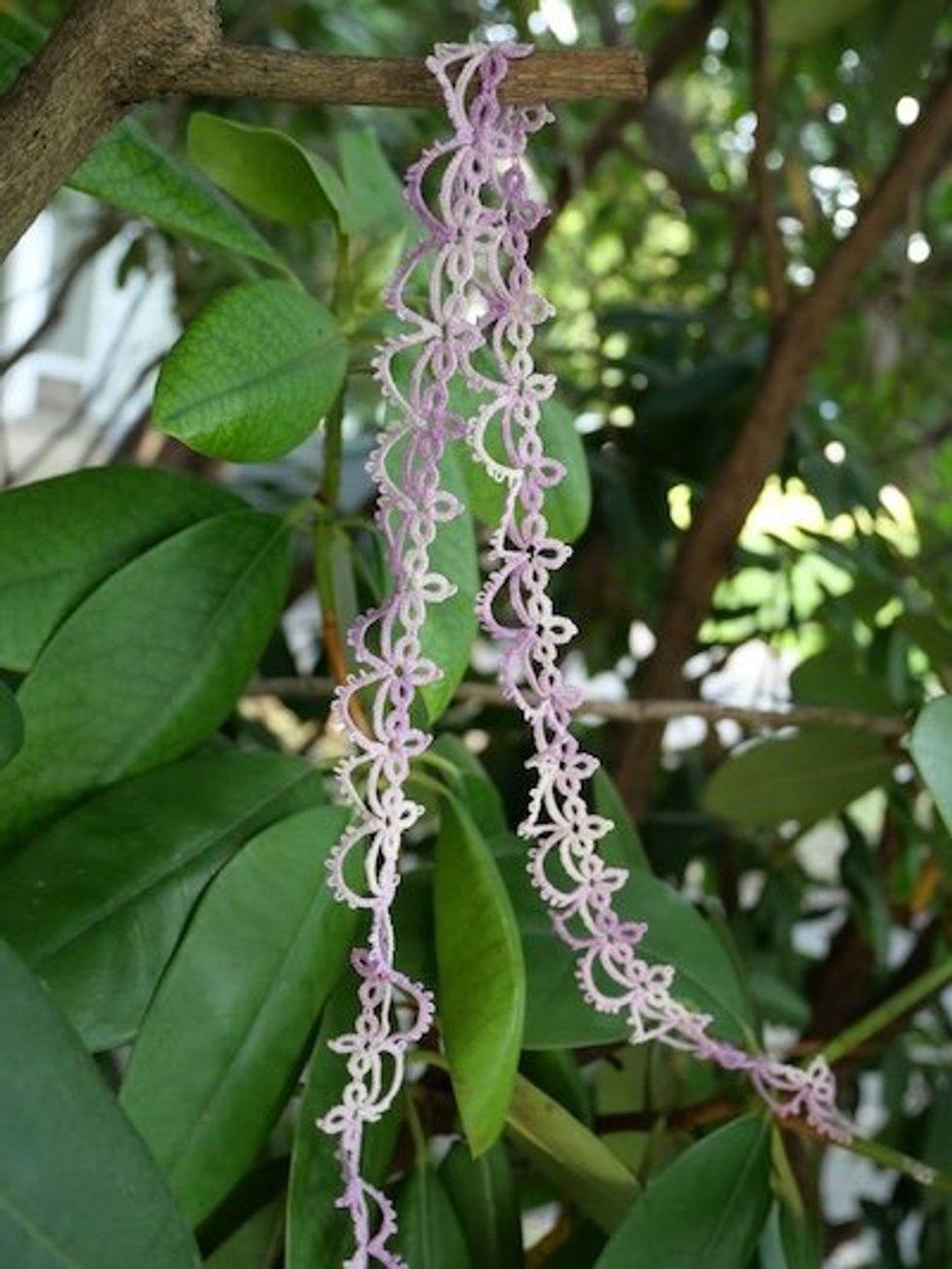 Keturah Hickman
Keturah Hickman
Originally Published at Daily Wire, World Net Daily, or The Blaze
What's Your Reaction?

































































































